Sustainable alternatives often come about through prototypes, from DIY electronics repair to ecohousing, agricultural tools to digital knowledge platforms. Prototypes are often small (at least to begin with) and local, but they can yield surprising results – sometimes becoming mainstream technologies like wind turbines, or ways of doing things like car clubs.
This makes prototypes of great interest to global efforts to work towards sustainability, including the Sustainable Development Goals (SDGs). With 17 goals and 169 targets, the SDGs seem to cover almost every area where action is needed: clean water, education, cities, food, energy and so on. Prototypes could be an important step in achieving change in many of these areas. The battle is often to break out of the structures that support unsustainable practices and relationships. In theory, prototypes can break the mould because they create spaces outside the usual norms, routines and institutions.
The problem is that the SDGs themselves have pretty institutional characteristics: their goals and targets make them prone to being used as a ‘checklist’ or auditing approach. Because of their global scale, they are being taken up by governments, big businesses and NGOs, who all have their own institutional cultures too.
So what happens when small, challenging, new prototypes come up against big, powerful institutions, and is there hope for prototypes to transform the world through the SDGs? Can prototyping culture – forking, openness, collaboration – even help to transform the institutions themselves? Sustainability prototypes anticipate worlds-not-yet ready and institutions-not-yet-existing. But it’s the inherited institutions of the present that evaluate and select what to develop. How might the SDGs help bridge this snag in time and enable transformations beyond prototyping?
This blog post explores these questions, inspired by a December 2017 workshop called ‘Sustainable Transformations: Beyond Prototyping’ at itdUPM, that I helped organise as part of my visiting research position at the Centre.
Can the Sustainable Development Goals be transformative?
Our workshop was conceived in light of the Sustainable Development Goals and an associated discourse concerning societal transitions to sustainability. The SDGs are an attempt by the United Nations to codify long-standing aspirations for social justice and environmental responsibility into a governance framework with 17 goals and 169 targets.
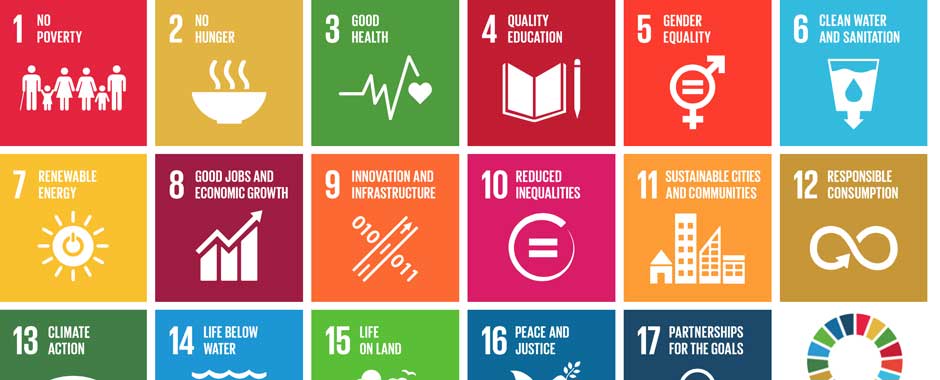
In order to achieve these aims by 2030, those working with the SDGs will need to avoid the fate of earlier codifications for sustainability governance. The history of sustainability policy over the last 40 years is littered with well-intentioned frameworks that turned into check-list, audit approaches. The risk is that they end up tweaking – rather than transforming – the business, state and civic institutions that underpin development-as-usual. The danger is that marginal changes are just made in order to demonstrate improved performance against selected indicators.
To be transformative, then, the SDGs need to avoid ticking boxes. Could prototypes and prototyping approaches be part of the solution?
What do prototypes do for sustainability?
In our workshop, we noted how people have been experimenting for decades with sustainable alternatives. They create spaces where the usual rules, norms and routines (i.e. institutions) are ignored and different approaches are tested.
We conceived these kaleidoscopic initiatives as prototypes for more sustainable futures. What can be learnt from these path-breaking attempts in sustainability in energy, food, housing, manufacture, mobility, leisure, water, care, investment, exchange, and so forth?
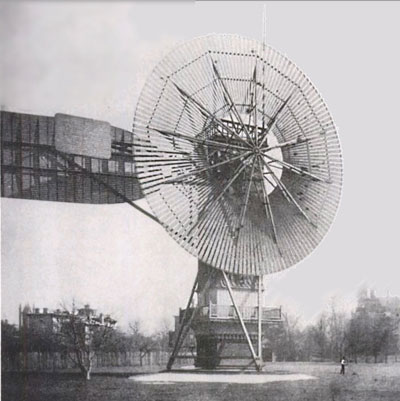
Whilst typically small-scale, sometimes ephemeral, and usually isolated, these activities might nevertheless point to new norms and routines for development, or even new institutions. Indeed, some have been able to network and scale into robust development pathways, such as the increasingly routine use of renewable energy in societies. Wind turbines may have seemed like a marginal and eccentric idea to some at the start: now they’re a familiar sight all over the world.
Prototypes, then, can be understood as material explorations and expressions of the sustainability norms that are now sought by the SDGs. The trick is whether prototypes and prototyping can be an effective weapon in the fight against the audit cultures that hamper real, transformative change. Could the creative dynamics at the heart of prototyping help to counter the risk of marginal, tick-box approaches?
Sustainability prototypes: many kinds, many outcomes
Participants brought a variety of examples to the workshop, many of which involved them directly. These showed the wide range of things that could be thought of as prototypes: from initiatives to promote cycling culture in the city, to laboratories for cultivating citizen innovation, initiatives in open science, new educational pedagogies and university platforms, electronics repair and recycling, open documentation platforms for a knowledge commons, DIY urbanism and hacking the city, new tools for citizen mapping, initiatives in urban agriculture, decentralised manufacture and remanufacture using post-automation practices, self-build eco-housing, community energy, and employment initiatives in solidarity economies.
Even this relatively small set of examples revealed the variety in prototyping: the ‘thing’ being prototyped, its purposes, its practices, the manifold institutions implicated, and kinds of transformation envisaged.
The results of prototyping vary hugely too, ranging from new or changed artefacts, skills, identities, methods, organisations, business models, infrastructures, and social relations. Some or all of these things can become available for wider use and diffusion. But what about their deeper roles in sustainability transformations?
Keeping open sustainability possibilities
My own view of prototyping has been as a site of experimentation, knowledge production, and improvement (including through failure). Prototypes are a complex and emergent assemblage of social and technical things. The creation of an urban horticulture initiative, for example, involves a diverse mix of people, knowledge, skills, tools, land, seeds, irrigation and know how, coordination mechanisms, principles of access, exchange and distribution, local markets or public services, and so on.
This mixture of things never stays still. Lessons are documented, next steps discussed, changes experimented, and new relations created.
But once you have a prototype, what happens next? One obvious route is to turn it into something that works more widely, at bigger scales, or can be replicated elsewhere. Moving beyond prototyping means turning the assemblages I’ve described above into more durable, smoother configurations whose wider uptake and diffusion elsewhere (beyond the site and circumstances that permitted prototyping) is relevant, attractive, and relatively convenient for others.
In this way, situated prototypes are rendered into ‘portable’ innovations. Critical in this approach is how the portable innovation is produced and diffused: how it spreads. Usually this works through simplifying and standardising it through institutional alignment: in other words, making something that performs well according to established norms and routines. This is challenging. For example, making a prototype ‘portable’ might include meeting the demands of risk management, returns on investment, health and safety, property and access rights, consumer markets, exchange and distribution; or fitting into the agenda cycles of policy-makers, development agencies, and foundations; and complying with standards for connecting to infrastructures; and other alignments with incumbent institutions.
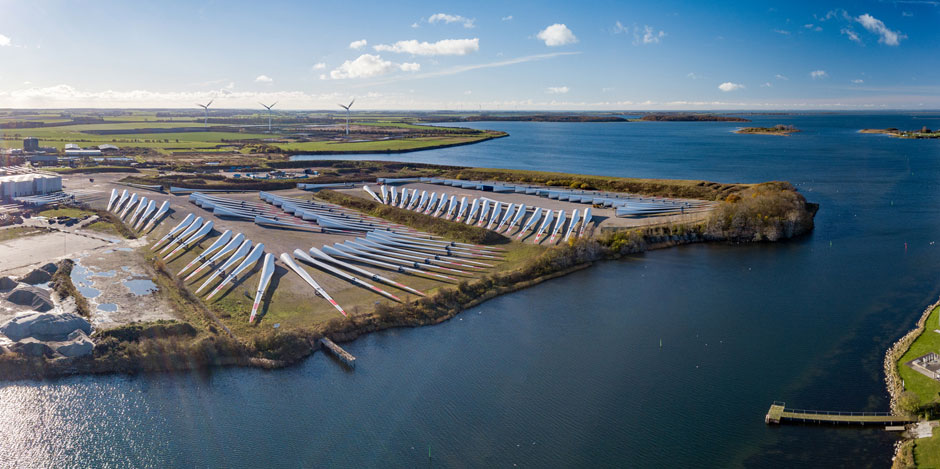
Alignment inevitably diminishes a prototype’s potential. A complex set of possibilities is reduced into a more straightforward model that is institutionally legible, tractable, and scalable. The impressive rise of renewable energy, for example, largely proceeds nowadays through a corporate-led, clean-tech, utility-based model that delivers low carbon power. Undoubtedly, much potential has been realised. Yet the institutionalisation of renewable energy has struggled to incorporate the democratic, decentralised energy practices prototyped by pioneering energy cooperatives, who were instrumental in the initial development of renewable energy in the 1970s and 1980s.
Some SDGs are realised by the renewables industry, such as environmental goals; but other goals, especially social goals, are deferred. Of course, the social choices involved in realising any potential overall are a political matter. Regrettably, the discussions over potential and possibilities are often shaped by the powerful institutions that reproduce unsustainable ways of being and doing. Too often they close off democratic deliberation over prototype possibilities to pursue: transformations fall short of what they could be.
Going beyond prototyping
Of course, the SDGs are meant to change the institutional matrix through which prototypes are worked into innovations and that subsequently diffuse into everyday practice. However, our workshop at itdUPM helped me appreciate the challenge of going beyond prototyping differently.
Rather than prototypes being experiments which get taken up by institutions and made into more mainstream things, could prototyping go deeper, to become part of the way things are done in institutions? Could the powerful experiences and practices from prototyping help to shape institutions themselves, and transform them into more open institutions for sustainability?
Turning a temporal snag to the advantage of sustainability
There’s a snag in going beyond prototyping. Sustainability prototypes permit explorations in worlds-not-yet-ready. Prototyping anticipates sustainable institutions, whilst usually having to deal with existing institutions. There is a temporal glitch between hope and audit: working to aspirations and practices that are not yet mainstream norms and routines.
So rather than seeing the misalignment of prototypes and institutions as a problem: could prototypes actually give birth to new institutions?
Even though other participants did not see the challenge quite this way, for me this snag suggests that going beyond prototyping means propagating a prototyping culture into institutional change. This means propelling the experiences, lessons, symbols and practices of path-breaking sustainability initiatives into spaces for institutional change.
This means seeing the task of ‘going beyond prototyping’ differently compared to the assembly and configuration described above. Rather than looking to getting things settled and ready for replication, re-application, scaling and expansion, it involves bringing prototyping culture positively into the task of institutional transformation.
Sustainability prototypes become reconceived as sites where new norms and routines can be proposed, experimented, deliberated, consolidated and, perhaps, gradually, institutionalised. And of course, they can be sites where existing institutions are tested in the light of sustainability ambitions: some might be found to still be helpful, but others will need changing. Once a prototype emerges, the task and question is then to explore the norms and routines that would help the prototype flourish in all its possibilities.
A prototyping culture would be open to experimenting with the institutional lessons from initiatives that take a particularly challenging approach to sustainable development, in terms of departing radically from incumbent institutions in the way they express, for example, the social justice aspects of the SDGs.
The practices, organisations, tools, and so forth, in the sustainability prototypes discussed at our workshop might flourish most when accompanied by wider institutional changes. Some of those that surfaced included commons-based forms of ownership; open standards; more democratic investment funds; extended social responsibility; participatory planning and regulation; action-oriented training and investigation; and so on.
The point is to use the wider ramifications of open and collaborative prototyping to explore these new institutional possibilities. Prototyping brings diversity and creative tension into arenas for institutional reform precisely when it’s antagonistic towards incumbent norms, whilst also providing practical examples in sustainability around which new institutions might form. Going beyond prototyping is to take concrete prototyping activity – in radical initiatives for sustainable food, mobility, manufacture, housing, energy, water and so forth – and use it to ground, develop and learn about new norms and routines through that activity.
Prototyping transformed: stretching time and space
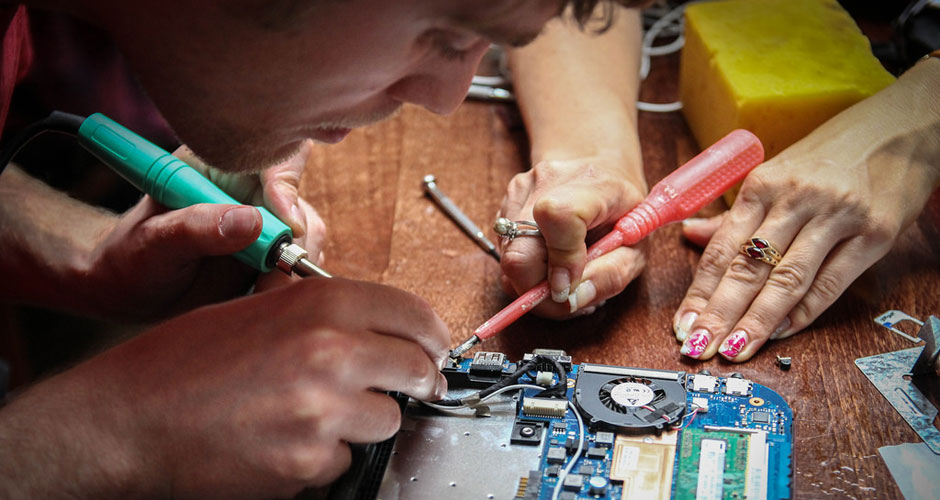
Extending prototyping culture into institutional spaces means transforming the characteristics of the encounter.
The typical dynamic for converting prototypes into portable innovations described earlier was one of ‘fit-and-conform’, akin to passing through a relatively closed institutional filter. Instead of this, the aim in going beyond prototyping could be ‘stretching-and-transforming’, or even overturning, institutions.
Doing so changes dynamics in prototyping itself. First, noted in our workshop, was the dynamic between treating prototyping as an instrumental or a convivial activity.
When you encounter institutions as a filter, then the purpose of prototyping focuses instrumentally on arriving at a solution for an institutionally specified problem: a successful audit and production of an innovation.
Transformed into an open culture, prototyping instead becomes a convivial activity for community building and alliance formation. This means bringing people together around a shared concern, and exploring new norms and mobilising relationships through prototypes; building alliances for new institutions more than portable innovations; negotiating political programmes and managing conflicts over social changes more than managing innovation; mapping pathways for dynamic, adaptable routines rather than rolling out standard models.
Thinking about prototyping in this way stretches time and space. Rapid prototyping gives way to giving things their due time, seeing activity as a more open-ended pathway compared to results-driven production. Agile participants no longer test functionality, practicability, and performance according to given specifications; rather, they take time to listen, discuss and compare the different positions of co-participants. Checks can be made on how a prototype performs from different positions, and in different locations, and how all these might flourish or diminish under different norms and criteria. These checks are to inform the slower process of negotiating new institutions.
Notions of tightly controlled, temporally regimented experimentation are inappropriate to this kind of prototyping culture.
Working inside and outside institutions
The SDGs should be seen as an invitation for going beyond prototyping in the ways outlined above. This is an alternative way to look at the SDGs, compared to establishing new metrics and relations of accountability within existing institutions. The risk with the latter is that these simply become a static filter rather than a creative space. The SDGs could instead become a resource for a prototyping culture geared towards institutional transformations by exploring more sustainable norms and routines.
The challenges in doing this are considerable, however. Those institutional actors charged with addressing the SDGs will find themselves working in and against their institutions. Going beyond prototyping will arise despite institutions, not because of them.
It means working in unaccustomed ways with novel groups and their practices, such as urban gardeners, circular economists, remanufacturers, sustainable mobility practitioners, low impact housebuilders, green educationists, cooperative investors, citizen innovators, and the multitude of others pioneering sustainability.
In doing this, there are risks to the reputations and status of both the institutional gatekeepers and the sustainability pioneers themselves. Institutional actors will be seen by colleagues as destabilising valued norms and heading beyond their routines into uncertain territory. And any whiff of ‘capture’ amongst the pioneers, and the threat of sustainability outcomes being truncated, can be deeply problematic for them. Mutual recognition of such dilemmas is important.
There are structural issues too. Institutions develop and hold together complex topologies of power in societies. Institutions and grassroots prototypers are not equally powerful. Asymmetric relations abound.
Could social movements help?
In the final reflections in our workshop, some participants noted how social movements were important here, since they are capable of generating shifts in culture, society, economy and politics that transform power relations. Pressure from social movements can help open up space for going beyond prototyping and into new institutional explorations.
Social movements can appear to be elusive processes for those working in prototyping. However, sustainability prototypes such as those at the workshop have become emblematic for some movements. They work as symbolic and practical embodiments of the rights, responsibilities, and changes to institutional norms and routines being sought, whether in political and economic systems, or in material culture and social life. With movements, the norms and routines being sought can come prior to prototypes, with the prototypes used to ground and validate what is being pursued. In a different setting, and clearly for different purposes, the values and identities that bring movements together can nevertheless act as an amplifier that interprets, selects and enrols prototypes into the cause.
There is scope here for prototyping to inform and fine-tune movement aims and strategies. Prototypes have always been part of such movements, and will continue to generate a demonstrative pressure. For example, separate to the incorporation of renewable energy into the electricity industry noted earlier, has been a resurgence in community energy developments. These citizen initiatives are predicated on a quite different vision for energy in society, and their flourishing implies institutions that routinize, say, energy justice or other goals.
So going beyond prototyping might serve as a bridge beyond the worlds outside and inside institutions. On the outside are movements who are using prototypes to elaborate socially progressive values, identities, norms and routines. On the inside are institutions that, at best, are tentatively trying to adapt to pressures and engage prototypes in explorations of new norms and routines (or, at worst, resisting, capturing and attenuating the possibilities).
Going beyond prototyping means the pursuit of a culture that enables connected work inside and outside institutions. The SDGs signify elite recognition that incumbent institutions are not working. If the SDGs are to become genuinely transformational, then the social movement aspirations that first mobilised sustainable development must continue to be present.
Final thoughts: forks, networks, and kaleidoscopic change
But wait! Isn’t there a contradiction between prototyping and institution? Surely, one encourages exploration and generates uncertainty, whilst the other needs settlement and promotes regularity?
Yes. There are contradictions. As with most other contradictions, however, working with the tensions involved can be a source of creativity, and inform changes of the kind sought by the SDGs.
Going beyond prototyping is a more expansive, ongoing, multi-scalar process in which participants negotiate multiple dilemmas:
- being instrumentally focused, and seeking convivial community-building;
- closing around discrete aims, and being open to new possibilities;
- motivated by hope, and disciplined by audit;
- achieving some results quickly, and slowing down to the pace of propagating mutual understanding;
- agreeing standards for communication and consistency, and permitting flexibility and plurality.
Ultimately, a prototyping culture means procedural openness towards unanticipated qualities, recognising diverse functions and plural relations in the prototype, appreciation of the recursive way the prototyping activity informs the conditions of its continued undertaking, being attentive towards the affective aspects of prototyping, such as excitement and frustration, release and containment, and the pursuit of unusual alliances and occupying unanticipated opportunities.
Forking the SDGs
Insights from free culture, procommons and free software are pertinent to these tensions, in particular ideas and practices of ‘forking’ and bifurcation, which we also touched upon at the workshop.

Forking is a moment when prototyping splits into different directions, as participants try different ways to realise the originating aims. A development forks off into two or more different pathways. In our case, this would mean prototyping two or more versions of the sustainability configurations in order to realise new, SDG institutions.
Forks will be most likely to happen when prototyping is going on simultaneously ‘inside’ institutional spaces and outside them in social movements. Each brings different constraints, opportunities and resources; and these differing characteristics present diverging possibilities for going beyond prototyping.
Forks involve rethinking, reoriented and new approaches, and taking things to different sites and applications. In so doing they open up new possibilities and new spaces.
In free culture, such forks are fine, so long as the process is acknowledged and openly documented. People are free to join in, and to take developments in different directions, so long as they do not inhibit others from participating or pursuing other directions. Importantly, such transparency also permits reconnections, new mixes, the forming of networks, and perhaps the possibility for connecting emerging norms and routines inside and outside spaces of institutional change.
Working creatively with forking in itself requires a broader institutional framework regarding rights and responsibilities for acknowledgement, license, documentation, transparency, archiving, collaboration, and freedom to participate. Open documentation has proven fundamental in the development of these practices. So too is the provision of an infrastructure and norms for archiving, tracing and sharing developments through forks and connections across prototyping activities. This is important for disclosing what prototyping is trying to achieve, what is being learnt socially, and revising the processes for new institutions in an open and free culture.
In this way, dialogue, interaction, and connections between pathways are maintained. The prototyping culture expands, but so too do the opportunities and networks for working across what was hitherto the ‘inside’ and ‘outside’ of institutional change.
Taking the qualities of prototyping seriously makes a more creative, forward-looking pursuit of the SDGs possible. Maybe a free culture can ‘fork’ the SDGs, taking them away from an auditor’s check-list, and use them as the basis for more open prototyping for sustainability?
Adrian Smith is Professor of Technology and Society at the Science Policy Research Unit (SPRU), University of Sussex, and is currently a visiting researcher at the Innovation and Technology for Development Center, Madrid (itdUPM). He is on Twitter at @smithadrianpaul.
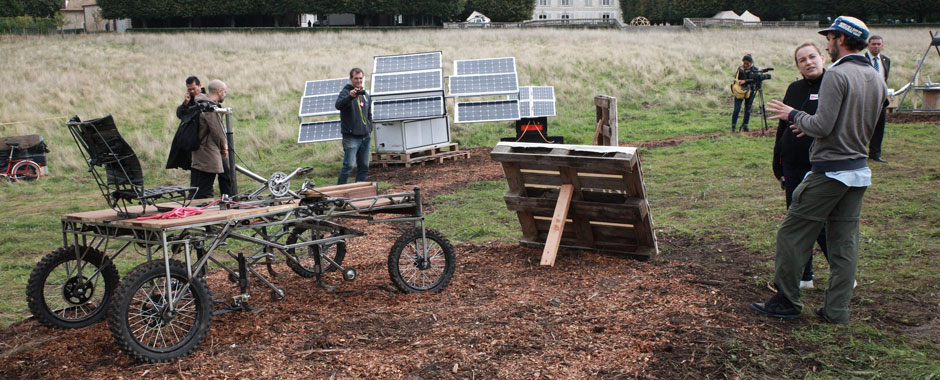
thank you. i really enjoyed stumbling across this article. just recently i tried to capture some thoughts on how our own (prototyping) process of tailoring e-textiles and wearable technology allows us to propose new ways of doing things which carry on to impact systems of knowledge and production. and wrote a post on our KOBA website titled: “More time, less waste?”
Hi Hannah – I enjoyed reading your blog. The thought and care, and yes, time, needed to put sustainability into practice become very clear in your work. It made me wonder though, about the time (pressures) we experience as individuals and what we might call collective time. Documenting the extra time and care given to working sustainably, as you do, and then sharing it widely, might enable others to access and adapt that practice a bit more readily. And vice versa. It will take a little time to get the hang of things and incorporate the changes learned from others, but maybe it is still quicker and easier for everyone all around when shared freely. So, for example, finding patterns and programmes for tesselating, and sharing that work presents a daunting prospect to us individually and when working in busy workshops. But if we are able to access others working with similar goals, and to collaborate or share that work, then the collective time devoted to the task adds up very quickly? I think this is another lesson from free culture (compared to that of forking which I drew upon in my article). Free culture offers a huge time bank of ideas, lessons, templates and so forth …?
Greetings friends of Steps Centre. Here is a proposal that might be of interest to you:
A VIRTUAL SUSTAINABLE PROTOTYPE CITY TO TRANSFORM THE REAL WORLD
Despite the high quality of life that some of the so-called developed nations have achieved, the truth is that the world, considered as a group of countries located in a fragile and geographically limited biosphere, is threatened with extinction due to human conflicts and the depredation of the environment.
Notwithstanding the good and very important actions taken by groups and individuals in favor of a better world, deterioration at all levels continues to increase dangerously.
After more than thirty years dedicated to these matters, and since “an image is worth a thousand words” we have come up with a novel idea of designing a self-sufficient and sustainable model city that has all the characteristics of infrastructure and organization inherent to the peaceful and sustainable society that we want for ourselves and our descendants, whose representation in the form of scale models, animated series, feature films, video games and theme parks, would constitute a model to follow to generate the necessary changes.
The prototype that we present has some characteristics that are opposed, sometimes in a radical way, to the religious, economic, political and educational traditions and customs that have been transmitted from generation to generation, yet are the causes of the aforementioned problems, and therefore must be transformed.
If you are interested in knowing about this project, or even participating in it, we invite you to visit our website https://elmundofelizdelfuturo.blogspot.com/ (written in Spanish and English), where we are working in that sense.